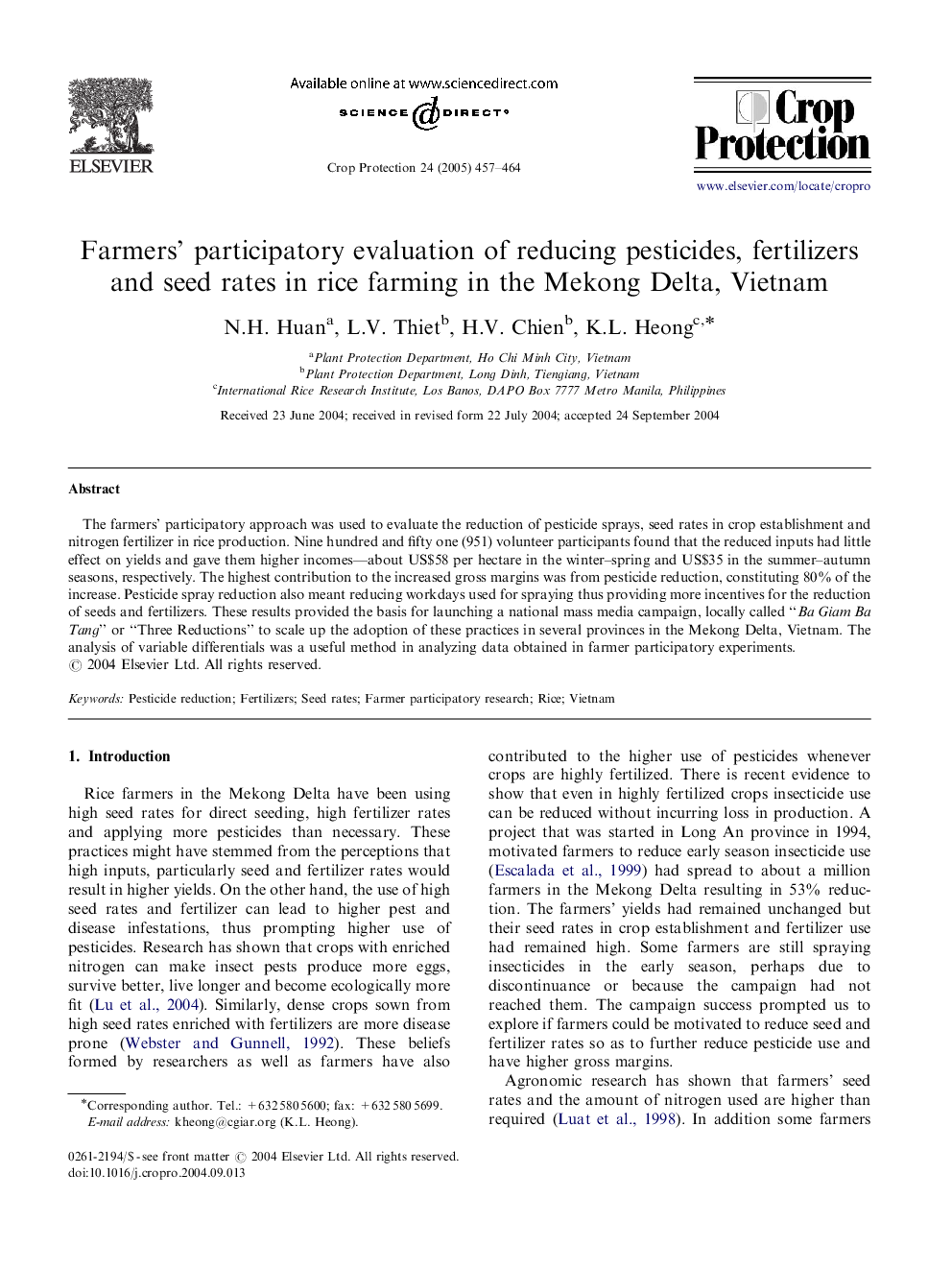| Article ID | Journal | Published Year | Pages | File Type |
|---|---|---|---|---|
| 9473148 | Crop Protection | 2005 | 8 Pages |
Abstract
The farmers' participatory approach was used to evaluate the reduction of pesticide sprays, seed rates in crop establishment and nitrogen fertilizer in rice production. Nine hundred and fifty one (951) volunteer participants found that the reduced inputs had little effect on yields and gave them higher incomes-about US$58 per hectare in the winter-spring and US$35 in the summer-autumn seasons, respectively. The highest contribution to the increased gross margins was from pesticide reduction, constituting 80% of the increase. Pesticide spray reduction also meant reducing workdays used for spraying thus providing more incentives for the reduction of seeds and fertilizers. These results provided the basis for launching a national mass media campaign, locally called “Ba Giam Ba Tang” or “Three Reductions” to scale up the adoption of these practices in several provinces in the Mekong Delta, Vietnam. The analysis of variable differentials was a useful method in analyzing data obtained in farmer participatory experiments.
Related Topics
Life Sciences
Agricultural and Biological Sciences
Agronomy and Crop Science
Authors
N.H. Huan, L.V. Thiet, H.V. Chien, K.L. Heong,
